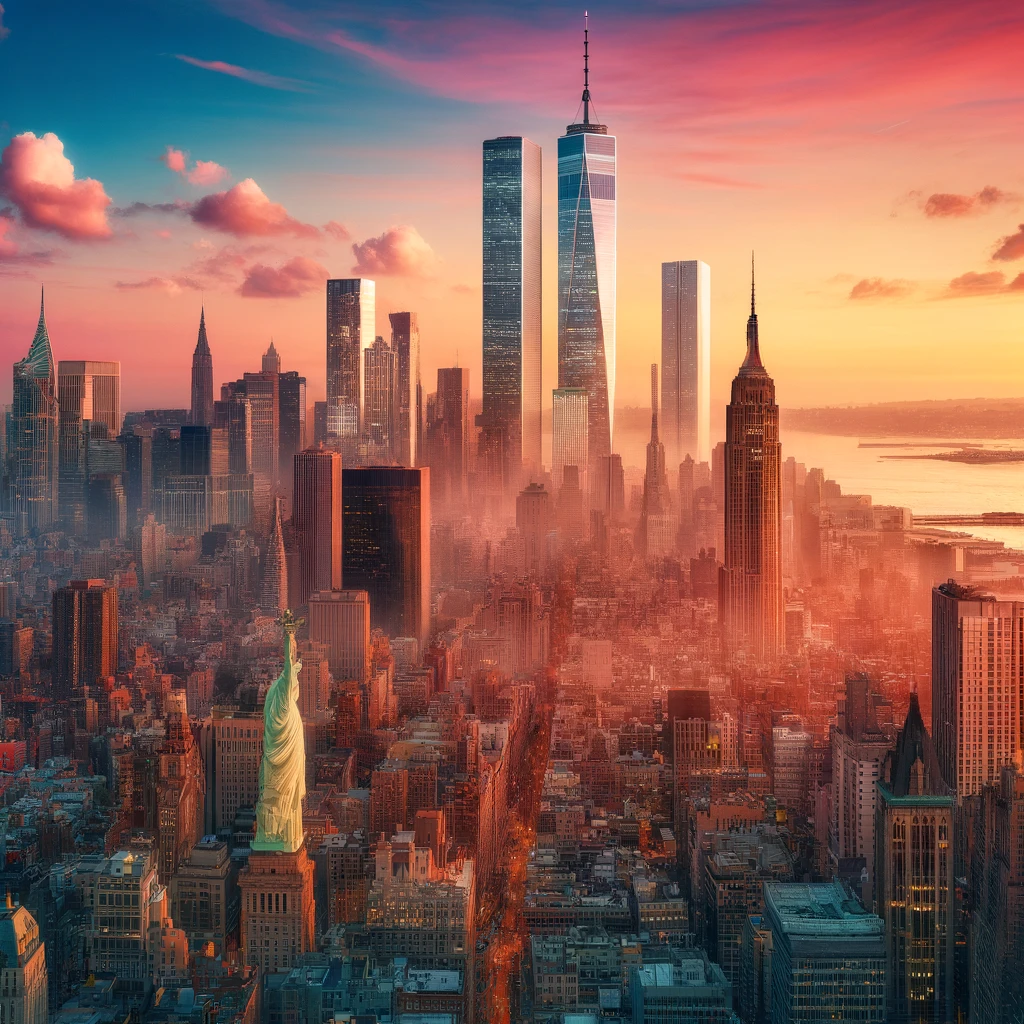
One World Trade Center, affectionately known as One WTC and previously known as the Freedom Tower, stands as a poignant emblem of resilience and renewal at the site where the tragic events of September 11, 2001, unfolded. The completion of this iconic skyscraper not only reshaped the New York City skyline but also symbolized a collective effort to move forward from one of the darkest moments in American history.

One WTC, soaring to a symbolic height of 1,776 feet, represents a tribute to the year of the United States’ Declaration of Independence. Its design and construction were laden with symbolism and driven by a profound mandate to reflect strength, endurance, and respect for the past while looking to the future. The building’s towering spire is a focal point in Lower Manhattan, serving as a beacon of hope and a testament to the resilience of a nation.
The architecture of One WTC is both striking and functional, featuring a shimmering façade of glass that reflects the ever-changing sky. Its design, created by the renowned architect David Childs in collaboration with Skidmore, Owings & Merrill, incorporates numerous innovations in terms of safety and sustainability that have set new standards for high-rise buildings worldwide. These include a reinforced concrete base, designed to withstand potential threats, and an array of environmental systems that enhance energy efficiency.
The site of One WTC, covering 16 acres, includes not just the tower itself but also a complex of surrounding buildings that contribute to the vibrant community. This area, once scarred by devastation, now thrums with the activity of businesses, tourists, and everyday New Yorkers, all moving through spaces that honor memory while fostering growth and innovation.
One WTC also plays a critical role in the revitalization of Lower Manhattan, driving economic growth and reestablishing the area as a hub for commerce and culture. The building hosts a mix of office spaces, from media companies to technology firms, symbolizing a forward-looking approach to diversified business occupancy. This diversification helps insulate the building from market fluctuations and ensures a dynamic environment for workers and visitors alike.
The observatory at One WTC offers breathtaking views of the city, drawing visitors from around the world who come to gaze out over Manhattan and beyond. This attraction not only offers a unique perspective on the city but also serves as an educational resource, providing multimedia exhibits that tell the story of the site, the building, and the resilience of the city.
However, One WTC is more than just a skyscraper; it is a piece of living history, a place of remembrance, and a community cornerstone. The National September 11 Memorial & Museum, located at the base of the tower, attracts millions of visitors each year. The memorial’s twin reflecting pools, sitting in the footprints of the original Twin Towers, serve as a solemn reminder of the lives lost. They are bordered by bronze panels inscribed with the names of every victim of the 2001 and 1993 attacks on the World Trade Center.
The impact of One WTC extends beyond its physical presence. It has become a cultural and emotional symbol, reflecting the narrative of a city and a nation that refuse to be defined by tragedy. The tower’s completion was a pivotal moment in New York’s recovery, a bold line drawn between the past and a hopeful future.
Internationally, One WTC has redefined what it means to build on sacred ground. Through its architecture, it communicates strength and hope, resonating with other nations that have faced similar challenges. The building is a case study in balancing commemorative respect with the need for economic and social redevelopment.
In conclusion, One WTC stands not just as a skyscraper but as a beacon of human endurance and collective resilience. It reflects the pain of the past and the promise of the future, serving as a steadfast reminder of the strength and spirit of both the city it graces and the broader global community. As One WTC continues to dominate the skyline, it remains a symbol of renewal, reminding us that from devastation can come growth, from sorrow can arise strength, and from a shared past can emerge a hopeful new chapter.”
Image depicting The One World Trade Center is gonzo. It captures the essence of the skyscraper in a vibrant and dramatic style.